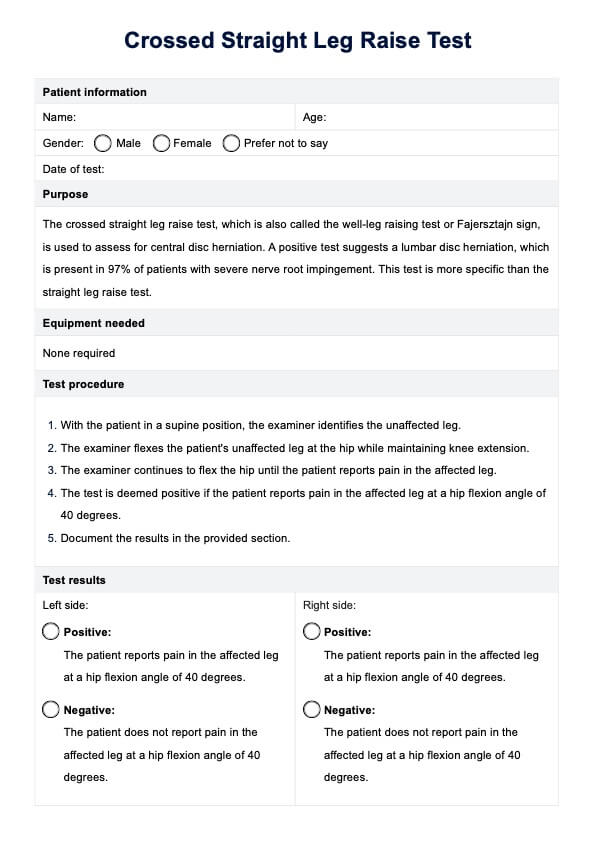The primary purpose of the Crossed Straight Leg Raise Test is to diagnose central disc herniation, particularly in cases of severe nerve root irritation or compression. It is also helpful in diagnosing herniated discs by assessing the accuracy and reliability of clinical tests.

Crossed Straight Leg Raise Test
Efficiently assess central disc herniation with our Crossed Straight Leg Raise Test template. Download a free PDF resource here.
Use Template
Crossed Straight Leg Raise Test Template
Commonly asked questions
The test is performed with the patient lying supine. The examiner raises the unaffected leg while keeping the knee extended. The test is positive if the patient experiences pain in the affected leg when the unaffected leg is raised.
Common symptoms include lower back pain, pain radiating down the legs (sciatica), numbness or tingling in the legs, and weakness in the lower extremities.
EHR and practice management software
Get started for free
*No credit card required
Free
$0/usd
Unlimited clients
Telehealth
1GB of storage
Client portal text
Automated billing and online payments











